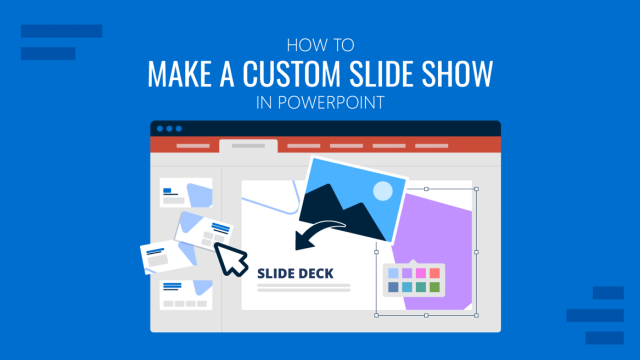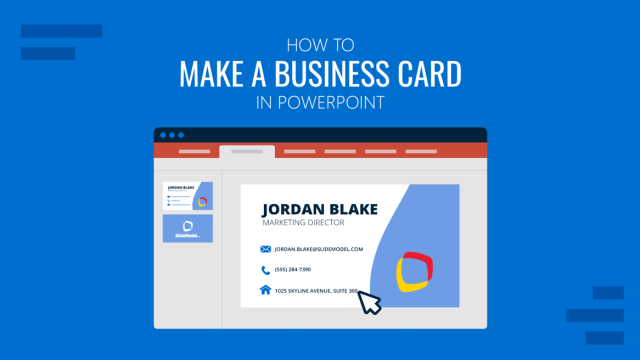
Action buttons in PowerPoint enable you to add various navigation features for your slide deck in the form of a button on a slide. There are also shapes for action buttons that can be associated with a custom function, or you can create a button with a custom look for your PowerPoint templates.
How to Insert an Action Button in PowerPoint
To add an action button, select a shape via Insert -> Shapes. Different shapes in the Action Buttons section can be associated with the action you intend to associate with them. These include buttons to go to the next or previous slide, the beginning or end of the slide deck, and buttons such as home, get information, video, document, sound, help, and blank. Alternatively, you can add another type of shape to create an action button.
For this post, we will use a blank action button.
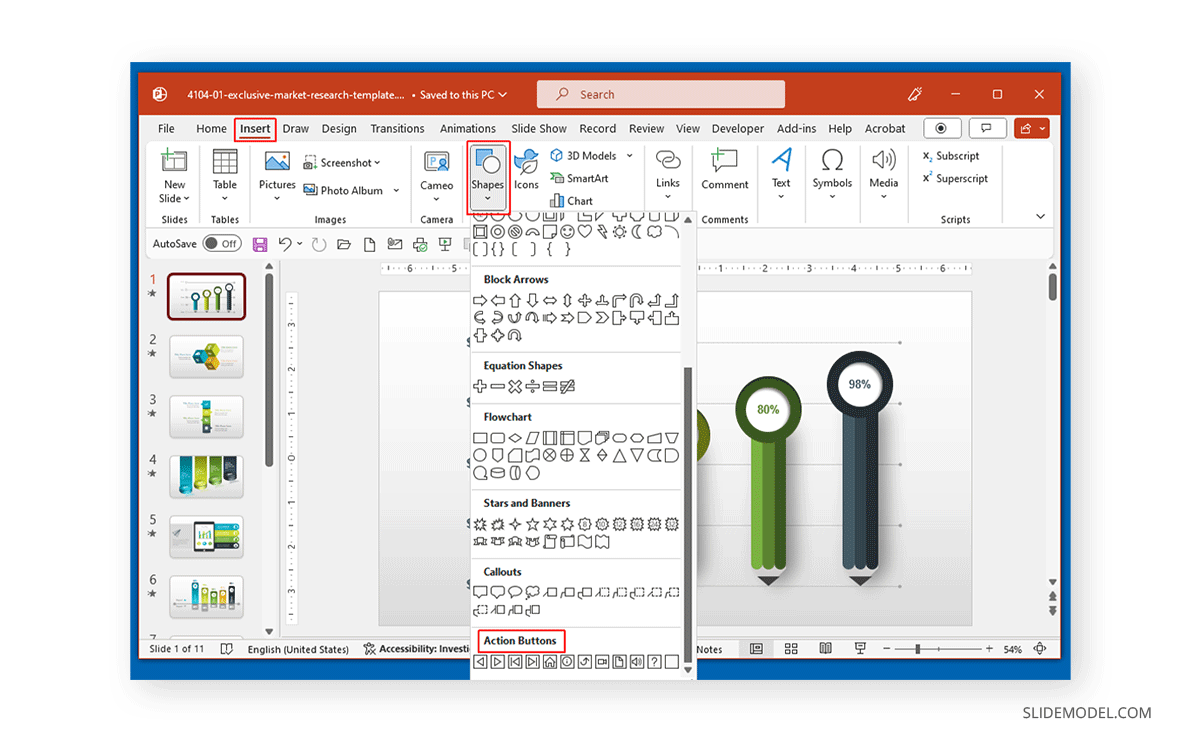
Once you have selected a shape, drag it to create it on the slide. This will open the Action buttons dialog box. If you associate another type of shape (e.g., a circle) with an action, you must open this menu via Insert -> Links -> Action.
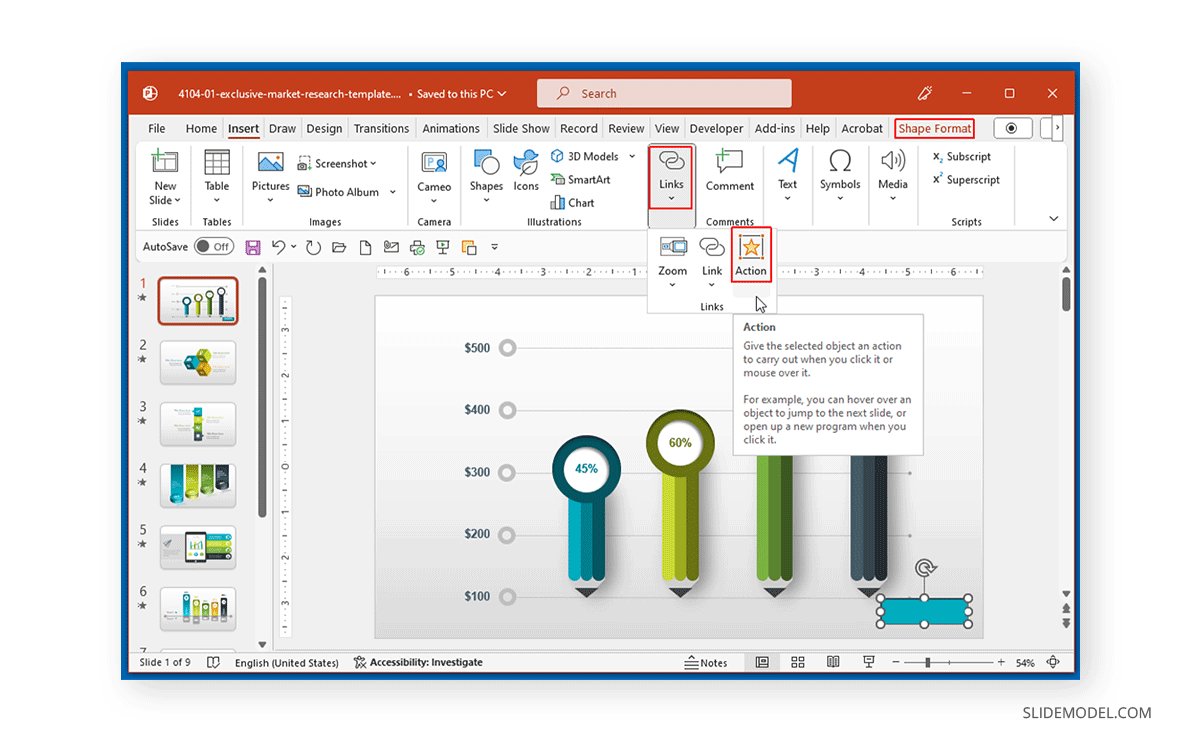
You can add text to your action button via Insert -> Text -> Text Box to give it a label.

The action button settings include two tabs, including the Mouse Click and Mouse Over tab. Both tabs have similar settings, where one is meant for settings related to clicking the action button and the other for hovering it. The Hyperlink to the menu gives you various options to link to the action button. These include moving to the next, previous, first, last, viewed slide, end show, custom show, and options to link to a URL, other presentation, or other file.
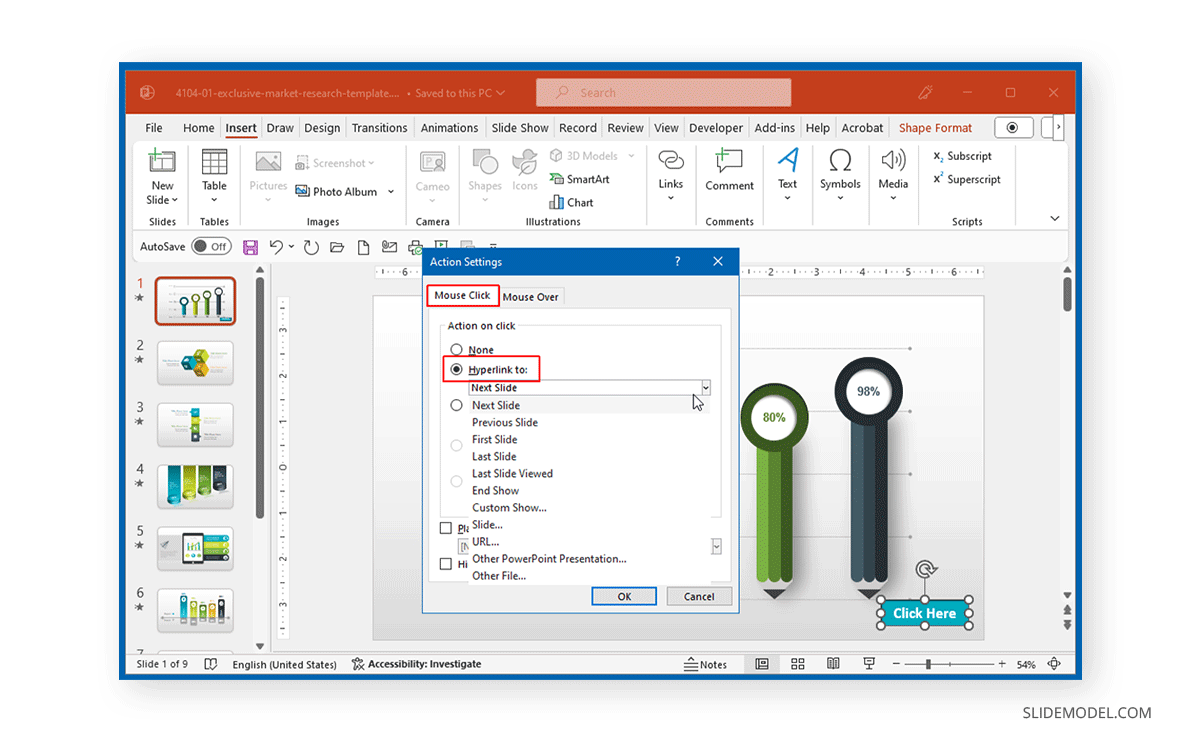
Depending on your chosen option, clicking the button will result in the selected action.
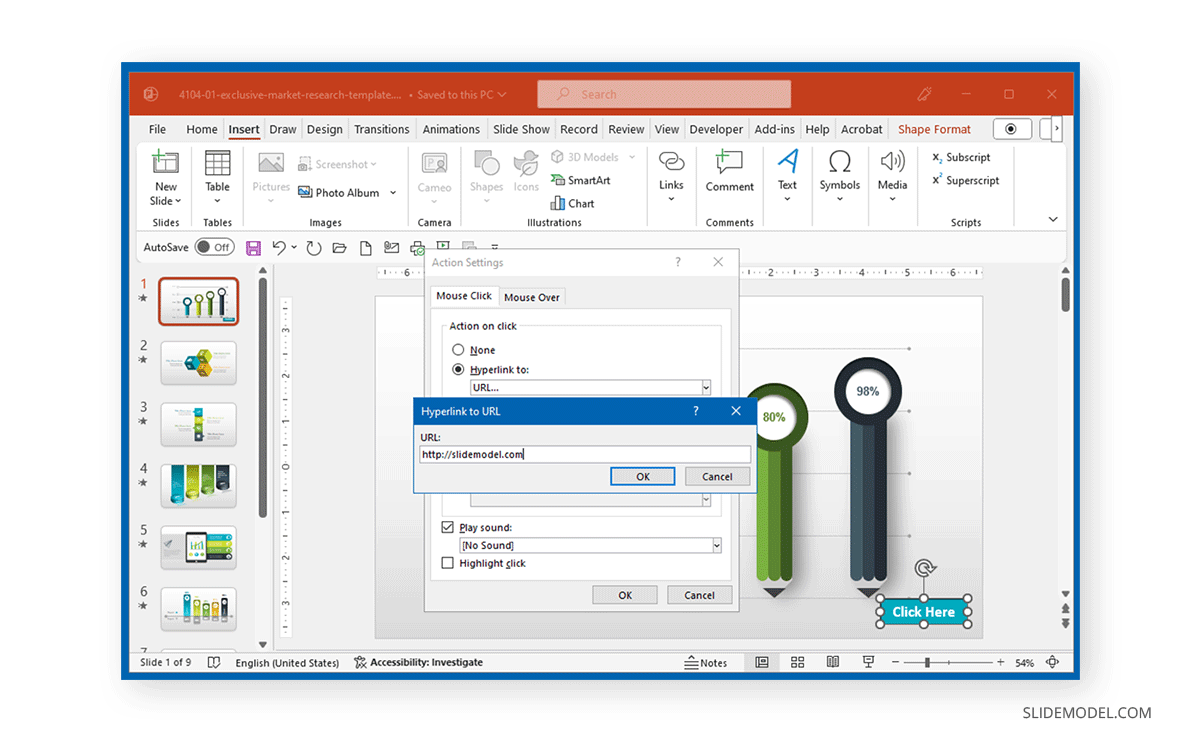
You can also set the action button to open another program by selecting the program via the Run program option.
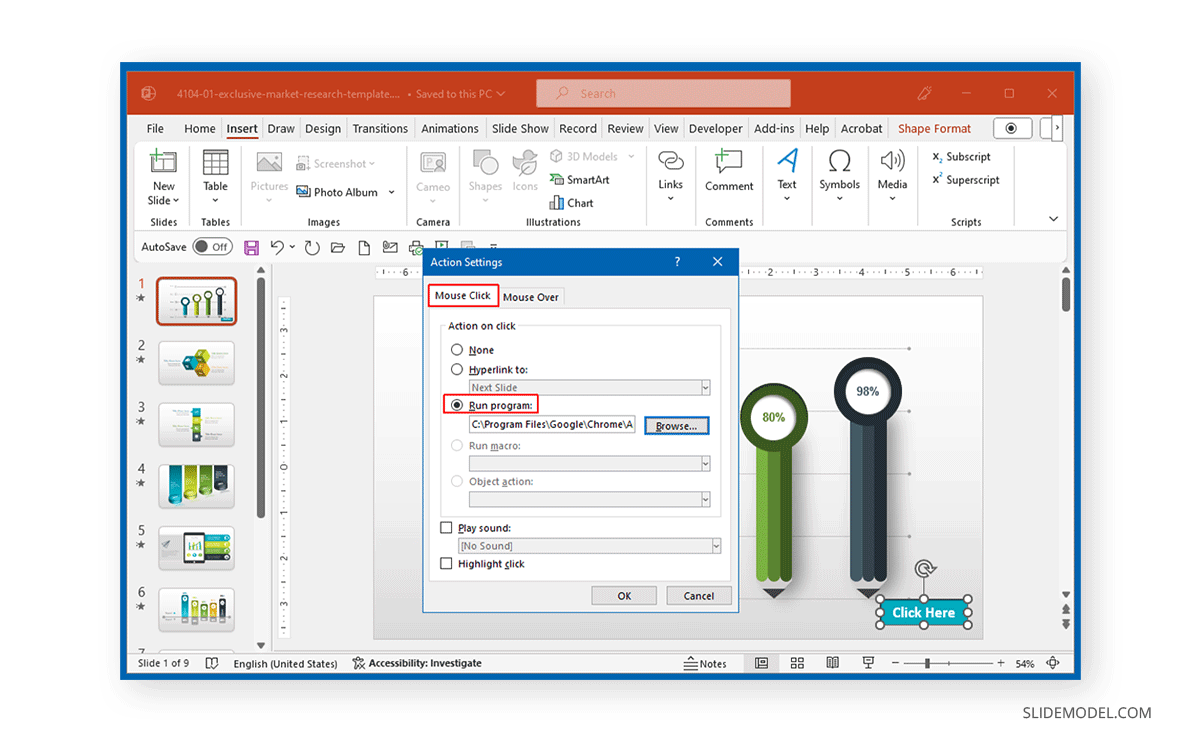
Alternatively, the action button can be used for other tasks, such as running a macro you might have set up in PowerPoint or using it for an object action.
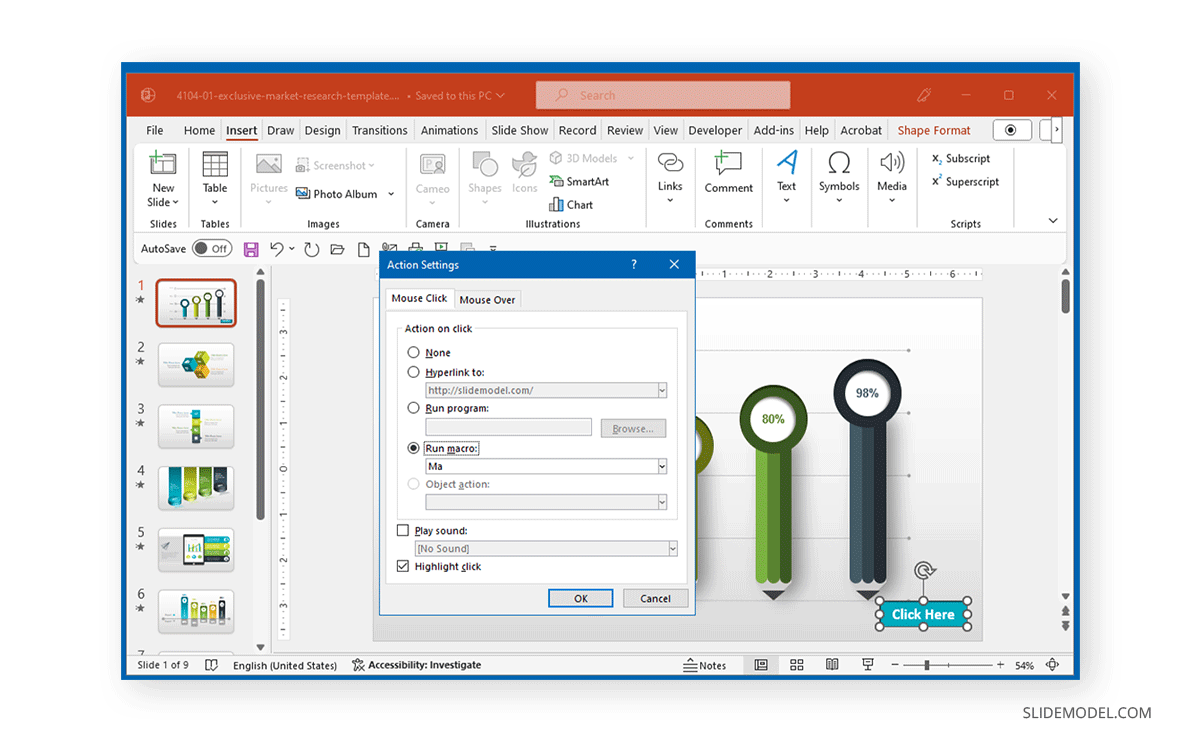
Another option in the action buttons menu is the ability to play sound. A wide range of sounds can be associated with the button, including applause, arrow, breeze, camera, chime, click, coin, drum roll, wind, voltage, typewriter, etc.
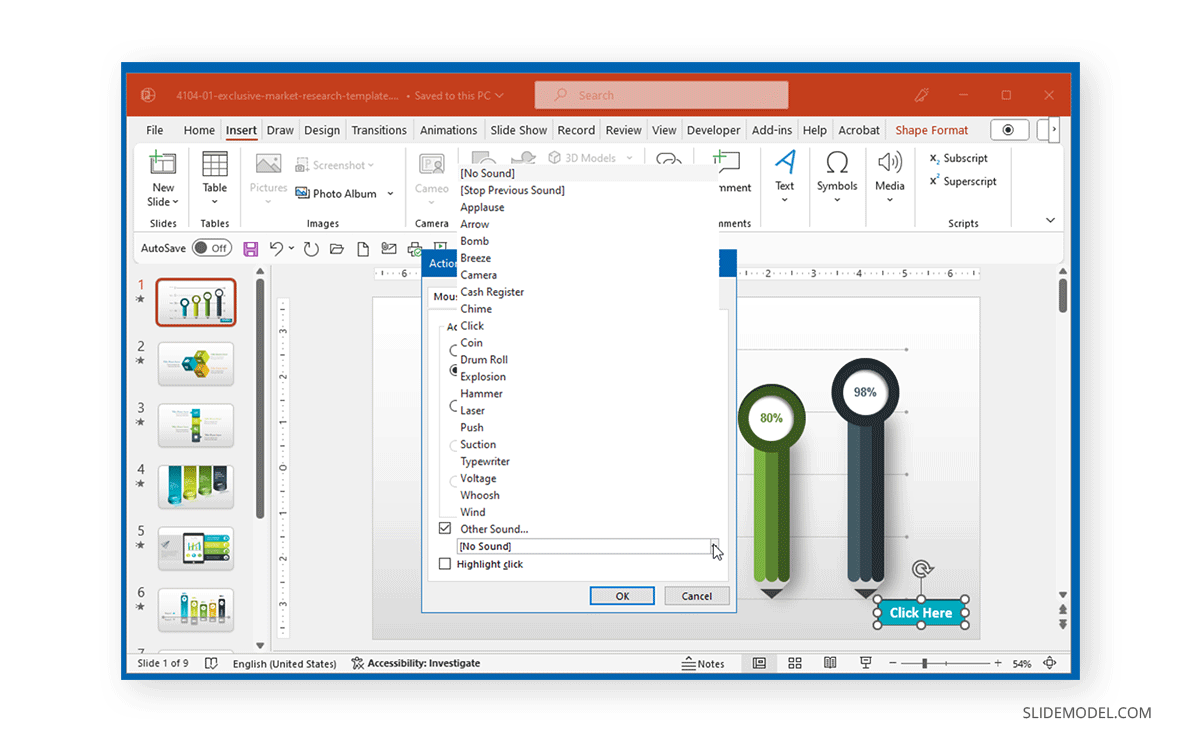
You can also choose to highlight the button on click by enabling the option from the Mouse Click tab.
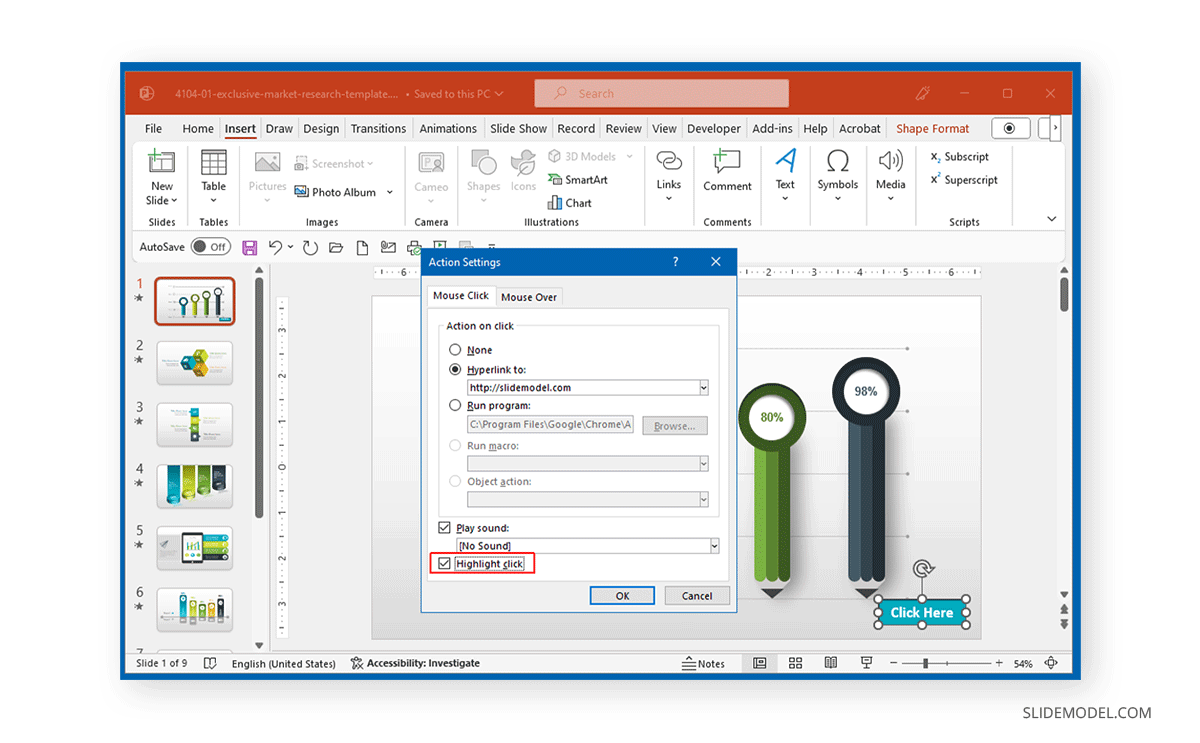
The Mouse Over tab provides similar options that can be configured to trigger a mouse-over action.

The image below shows an action button in slideshow mode, which has been linked to open the SlideModel website with a mouse click.
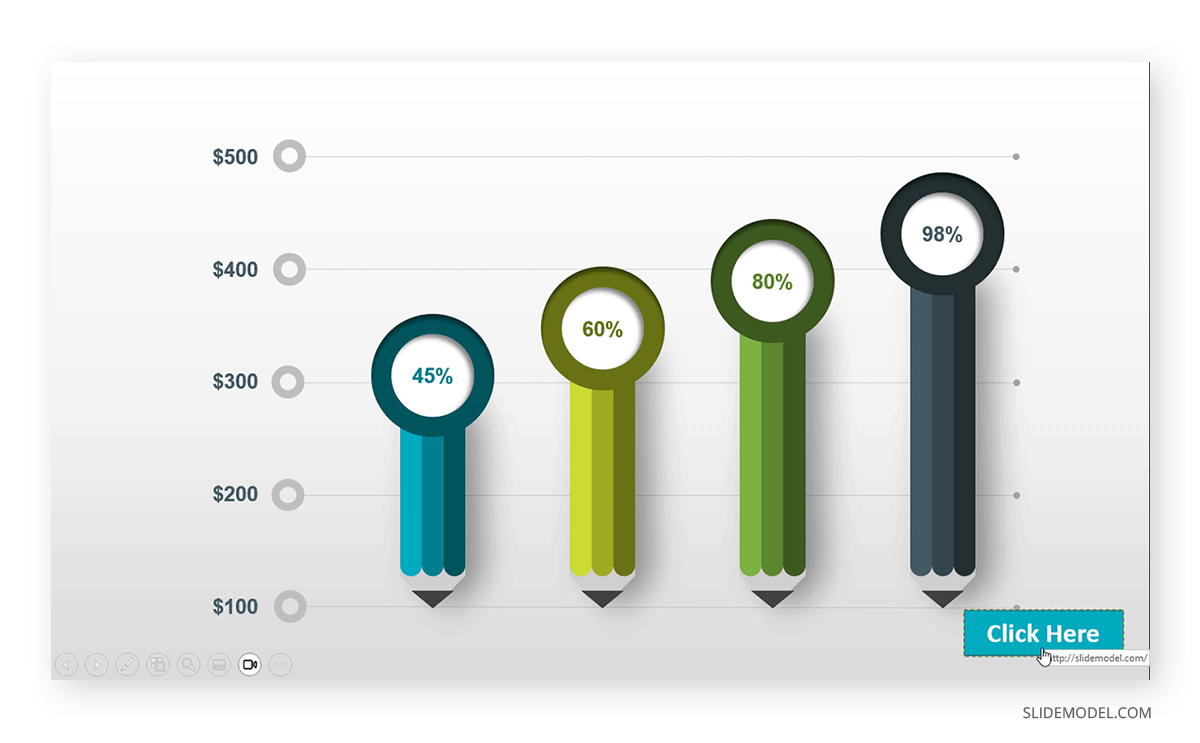
Final Words
Action buttons answer many questions that many PowerPoint users might be looking to address, such as how to insert a home button in PowerPoint, a button to jump to another slide, or a button to open a different file or program. By using action buttons, you can also avoid leaving the slide deck to open a file, link, or program and automate various actions to navigate your slides better.

